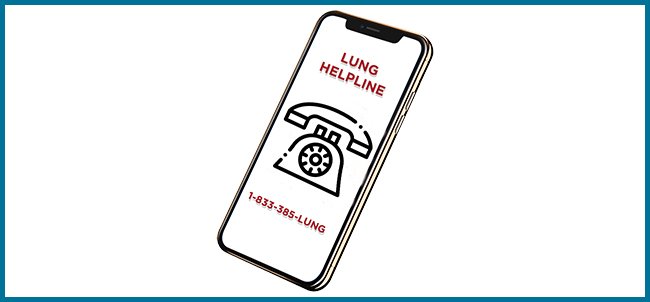Bronchiectasis
Bronchiectasis is a condition where the lungs’ airways are abnormally stretched and scarred, resulting in mucus buildup. Often bronchiectasis is caused by an infection or other condition that injures the walls of the airways or prevents mucus from being cleared. People with bronchiectasis have periodic flare-ups of breathing difficulties, called exacerbations.
What causes bronchiectasis?
There are many health-related problems that can cause bronchiectasis, including lung infections, autoimmune diseases, diabetes, inflammatory bowel diseases like Crohn’s, or someone can be born with it, relating to their lung development as a fetus. However, there is also the possibility of not knowing the root cause of bronchiectasis.
What are common symptoms?
- Shortness of breath

- Wheezing
- Daily cough
- Coughing up mucus
- Coughing up blood
- Chest pain
- Fever or chills
- Fatigue or weakness
- Recurrent colds
- Mucus with a bad smell
How is it diagnosed?
Early diagnosis of bronchiectasis is important to prevent any further lung damage. The best diagnostic test to confirm bronchiectasis is a high-resolution computed tomography scan (CT scan) of the chest. Other tests that can be done if a patient is presenting with symptoms of bronchiectasis are:
- a thorough patient history to determine if any other underlying conditions are present
- blood tests, sputum cultures
- chest radiographs (Chest X-Ray)
- pulmonary function test
Are there available treatments?
Medications:
- Antibiotics to treat lung infections
- Bronchodilators
- Corticosteroids
Chest Physical Therapy for Airway Clearance:
- Chest physical therapy or chest physio is a therapy to help loosen mucus in the chest so it can be expelled by coughing. Chest physical therapy is typically done sitting or lying down. Pounding on the chest with a fist or using electric devices such as a chest clapper or inflated vest can be used to loosen the mucus.

- Oscillating Positive Expiratory Pressure Devices are also commonly used. This device causes vibrations in the airway. The vibrations help to loosen mucus so it can be coughed up and out easier.
Pulmonary Rehabilitation:
-
Pulmonary rehabilitation is an exercise and education program to help patients manage their condition. Education can include topics on holistic ways to manage their lung disease, such as quitting smoking, nutrition, exercise, as well as the importance of staying up to date on immunizations and washing hands to help prevent lung infections.
We asked Deborah...
What is something you want someone newly diagnosed to know?
I would like people to know they are not alone. Even though bronchiectasis is considered rare, there are others who have it! There is a lot more information available now than when I was first diagnosed. Lung Saskatchewan has some great resource on this page and there are also links to even more information below.
Once you have the diagnosis, please ask lots of questions of your health care providers. It is important to understand how beneficial physical therapy is. Trying to clear your airways each day will help you be healthier for longer. Inhalers are an especially important aspect of care, and it is beneficial to understand what each inhaler is for and how to effectively use them. (Be sure to check the Lung Saskatchewan inhalers page to see videos and information about each inhaler).
Also, it is important to be cautious because a common cold can quickly turn into an infection for people with bronchiectasis. Get your vaccinations, wear a mask in large crowds, and be diligent about washing your hands.
What has been most helpful along your journey?
It has been helpful to have people around that understand bronchiectasis and how it affects me. I do not have to explain myself or bronchiectasis, and always have people checking in on me.
More recently, I took a course on being chronically ill and learned many strategies on how to cope with the mental and emotional toll of chronic illness. I tend to feel down when I get sick. This course taught me how to change my thought process and has allowed me to function better during these times.
What do you hope for the future of bronchiectasis?
In the future, I hope to see earlier diagnosis for bronchiectasis patients being diagnosed earlier in a person’s life. I also hope to see a better understanding of the relationship between sinuses and lung health, due to the impact sinuses have on the development of lung infections.

.jpg)




